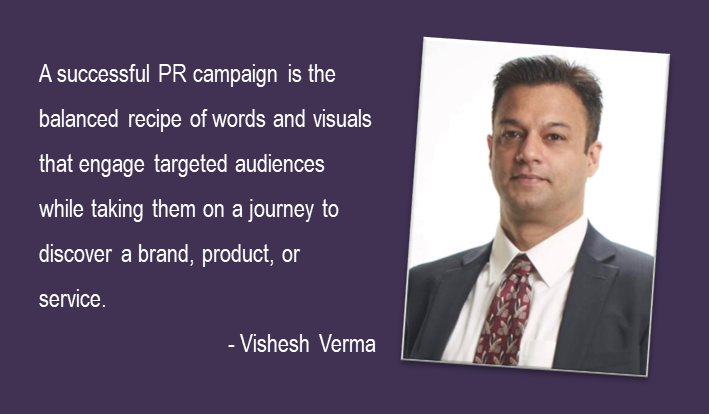A good story can create emotions and feelings within oneself and is the most powerful tool to introduce ideas into the world. Storytelling is the cornerstone of all art forms and communications, and it is one tool man has been using since time immemorial.
Only a good storyteller has the power to captivate the mind and stimulate thought. A good story can make us experience the information and not just consume it.
Storytelling vs Communications
Since Edward Bernays (the father of modern Public Relations), a good PR professional or agency has adopted a strategy of storytelling using neutral, authentic, and credible information about the client. The communications field has evolved immensely over the last two decades; from being a support function to becoming a part of the board meetings for every MNC or a homegrown organisation, communications has been accepted as a core aspect of any business strategy.
Being part of one of the most dynamic and ever-evolving industries globally, an array of new technologies, channels, and tacts keep coming along. Yet, storytelling will continue to remain the core at any given point. At its very core, Public Relations is nothing but an efficient and effortless way of storytelling that conveys what the brand is, what it stands for and what it offers, and so on.
The Art Of Storytelling
Essentially, every brand’s primary focus is to persuade people into buying or choosing their services or product. Still, only compelling storytelling can unite an idea with emotion and inspire people to take independent actions. When everything collapsed in the last year and a half, communications was the only means for all brands and organisations to keep their stakeholders engaged.
Based on cognitive psychology studies, it is explained that the human mind, in its attempt to understand and remember, assembles the bits and pieces of experience into a story, beginning with a personal desire, a life objective, and then portraying the struggle against the forces that block that desire. Hence we remember, stories are how we remember; we tend to forget lists and bullet points.
New Age Of Communication
Today, the way stories are being told is changing. They have become interactive, relatable, relevant, and visually appealing. Because of digitisation, storytelling is now real-time and not delayed. These testing times have made organisations rethink the mix of traditional media vs social media. While social media (screen time) spent by an individual has gone up, traditional media (which had seen a substantial downfall in circulation and reporting) is coming back and will continue to contribute to reputation building.
Technology will continue to have the upper hand in the business as it takes away the luxury of a desk job and makes the professionals put out real-time honest stories about the brand to reach out to its stakeholders and end consumers.
The Essence of Communications
Amidst all the changes, the art of storytelling has remained the essence of Public Relations. Throughout history, most influential PR professionals are, first and foremost, storytellers who have built brands and narratives through compelling storytelling.
A successful PR campaign is the balanced recipe of words and visuals that engage targeted audiences while taking them on a journey to discover a brand, product, or service.
People will tell stories until the end of time, but it will continue to evolve in how it is narrated. As professionals, it will be our job to unfold and discover unique and innovative ways of utilising them in the business.
“The most powerful person in the world is a storyteller. The storyteller sets the vision, values and the agenda of an entire generation that is to come.”
– Steve Jobs
The views and opinions published here belong to the author and do not necessarily reflect the views and opinions of the publisher.



Be the first to comment on "Storytelling will continue to be at the heart of communications"